You’ve come to the right place if you’re looking for crawling insect extermination services. Here at Four Seasons Exterminating, we specialize in getting rid of crawling insects quickly and efficiently. No matter what type of crawling insect you’re dealing with, we can eliminate them.
We Guarantee it!
We understand how frustrating and difficult it can be to deal with crawling insects, so we’re here to help. We’ll work quickly and efficiently to eliminate the problem so you can return to enjoying your home or business.
Below is a short list of the many crawling insects: these insects are considered undesirable due to their record of invading human habitats, causing damage, consuming human foods, acting as disease carriers, or inflicting other forms of harm.


Millipede: Millipedes, sometimes called “a thousand leggers”, are common household pests. These creatures typically live outdoors, feeding on damp and decaying wood and vegetable matter, tender roots, and green leaves on the ground. Millipedes are a group of arthropods characterized by two pairs of jointed legs on most body segments; they are known as the class Diplopoda, derived from this feature. Each double-legged component is a result of two single segments fused together.


Pavement Ants: The name “Ant” comes from where they locate nets. These Pavement Ants commonly occur under cracks in the pavement. Pavement ants will occasionally nest in walls, insulation, and under floors. The most likely place is in ground-level masonry walls of the foundation, especially near some heat source in winter. Outside, these ants typically nest under stones, in cracks in pavement, and next to buildings.


Carpenter Ants: They build nests inside wood consisting of galleries chewed out with their mandibles, preferably in dead, damp wood. However, unlike termites, they do not consume wood. Sometimes, carpenter ants hollow out sections of trees. They also commonly infest wood. Examples are wooden cabinets, buildings, and structures, a widespread nuisance and a significant cause of structural damage. Nevertheless, their ability to excavate wood helps in forest decomposition.


Odorous House Ant: Tapinoma is sessile is a species of small ant that goes by the common names odorous house ant, sugar ant, stink ant, and coconut ant. Their colonies are polydomous (consisting of multiple nests) and polygynous (containing multiple Reproducing queens). Like many social insects, T. sessile employs complex foraging strategies, allocates food depending on environmental conditions, and competes with other insects. T. sessile can be found in many habitats, including within houses. They forage mainly for honeydew, produced by aphids and scale insects guarded and tended by the ants, as well as floral nectar and other sugary foods. They are common household pests and are attracted to sources of water and sweets.


Silverfish: The silverfish (Lepisma saccharinum) is a species of tiny, primitive, wingless insect in the order Zygentoma (formerly Thysanura). Its common name derives from the animal’s silvery light grey color, combined with the fish-like appearance of its movements. The scientific name (L. saccharinum) indicates that the silverfish’s diet consists of carbohydrates such as sugar or starches.


Pillbug: These crawling creepers come from the Armadillidiidae family. This family is woodlice, a terrestrial crustacean group in the order Isopoda. Unlike members of other woodlice families, members of this family can roll into a ball, an ability they share with the are outwardly similar to but unrelated to pill millipedes or other animals.


Sow Bug: The Sowbugs and Pill Bugs are similar-looking pests more closely akin to shrimp and crayfish than insects. They are the only crustaceans that have adapted to living their entire life on land. Sowbugs and pillbugs live in moist environments outdoors but occasionally end up in buildings.


Centipede: Centipedes are predatory arthropods belonging to the class Chilopoda of the subphylum Myriapoda, an arthropod, including clues millipedes and other multi-legged creatures. Centipedes are elongated metameric creatures with one pair of legs per body segment.
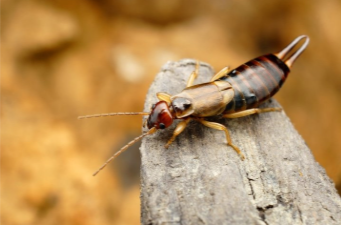

Earwigs: Earwigs belong to the order Dermaptera, with one common genus being Forficula, particularly the European earwig (Forficula auricularia). These insects prefer moist, dark environments and are often found under boards, tree holes, decaying bark, and other damp areas. The name “earwig” originates from an old myth that they crawl into people’s ears, which is not true. Signs of an earwig infestation include finding their characteristic pincers, seeing them in damp and dark areas, and noticing damage to plants and leaves.
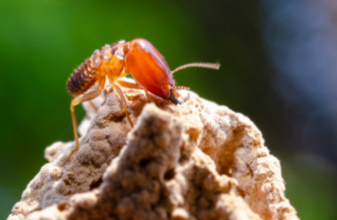

Termites: Termites belong to the order Blattodea and are primarily classified into three major types: subterranean, drywood, and dampwood termites. They thrive in environments with abundant cellulose materials, such as soil, wood, and leaf litter. Subterranean termites, for example, build extensive nests underground, while drywood termites inhabit dry wood above ground. The name “termite” is derived from the Latin word “termes,” meaning “woodworm.” Common signs of termite infestations include mud tubes along walls, hollow-sounding wood, discarded wings near windows or doors, and frass (termite droppings) that resemble sawdust.


Ticks: Ticks belong to the genus Ixodes within the family Ixodidae. They are parasitic arachnids that require a blood meal for survival and reproduction. Ticks can be found in a variety of habitats, including grassy fields, wooded areas, and shrubs, where they wait for a suitable host to pass by. The name “tick” likely originates from the Old English word “ticia,” meaning “small animal.” Signs of tick presence include finding the ticks themselves on humans or animals, often attached to the skin, and experiencing symptoms such as itching, rash, or flu-like symptoms after a potential tick bite.
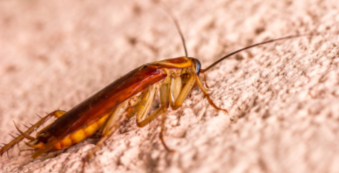

Cockroaches: Cockroaches belong to the genus Blattodea, encompassing a diverse group of insects under the Order Blattodea. They are commonly found in warm, humid environments such as kitchens, bathrooms, and basements, where they have easy access to food and water. The name “cockroach” is derived from the Spanish word “cucaracha,” which translates to “crazy bug.” Signs of a cockroach infestation include seeing live cockroaches scurrying away when lights are turned on, finding their droppings that resemble coffee grounds or pepper flakes, and noticing a musty or oily odor in infested areas.
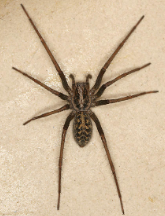

Giant House Spider: The giant house spider has been treated as either one species, under the name Eratigena atrica, or as three species, E. atrica, E. duellica, and E. saeva. As of April 2020, the three-species view was accepted by the World Spider Catalog. They are among the largest spiders in Central and Northern Europe. The giant house spider, belonging to the genus Tegenaria, is commonly found in quiet, shaded areas such as crawlspaces, basements, and barns. This spider derives its name from its large size and frequent presence in human dwellings. Signs of a giant house spider infestation include spotting their funnel-shaped webs in secluded areas and noticing their fast movement across floors and walls.
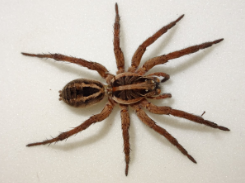

Wolf Spider: Wolf spiders belong to the family Lycosidae, which encompasses many genera, including the genus Lycosa. They thrive in a wide range of habitats, from dry inland shrublands and woodlands to wet coastal forests and alpine meadows. The name “wolf spider” comes from their hunting behavior, as they do not spin webs but instead chase down their prey like wolves. Signs of wolf spiders include finding them actively hunting on the ground at night, spotting their distinctive eye arrangement (two large eyes in the front row), or discovering their burrows lined with silk.
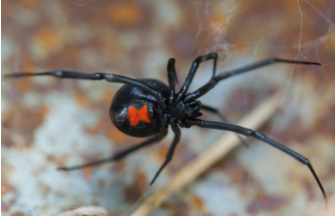

Black Widow Spider: Black widow spiders belong to the genus Latrodectus. These spiders are commonly found in various habitats, including forests, grasslands, deserts, and even urban areas where they prefer dark, undisturbed places such as woodpiles, sheds, and basements. The name “black widow” is derived from the females’ tendency to sometimes eat their mates after reproduction. Signs of a black widow infestation include the presence of irregular, tangled webs in low-lying areas, as well as sightings of the distinctive shiny black spiders with a red hourglass marking on their abdomen.
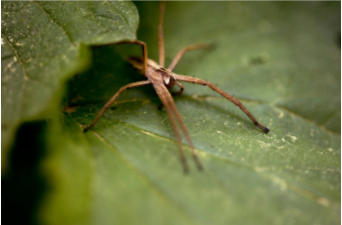

Brown Recluse Spider: The brown recluse spider, Loxosceles reclusa, belongs to the genus Loxosceles. These spiders prefer secluded habitats such as gaps under rocks, boards, and the bark of dead trees and logs. Indoors, they can be found in undisturbed areas like attics, basements, and closets. The name “recluse” comes from their reclusive nature, often hiding away from human activity. Signs of a brown recluse infestation include sightings of the spiders themselves, which are brown with a distinctive violin-shaped marking on their back, and the presence of irregular, loosely woven webs in corners and other hidden spaces.


Fishing Spider: Fishing spiders belong to the genus Dolomedes. They typically inhabit areas near water such as streams, ponds, and marshes, but can also be found in wooded settings far from water. Their name comes from their ability to catch small fish and other aquatic prey, which they do by skimming the water’s surface. Signs of a fishing spider infestation include the presence of their large molted exoskeletons and sightings of the spiders themselves, which are notable for their significant size.
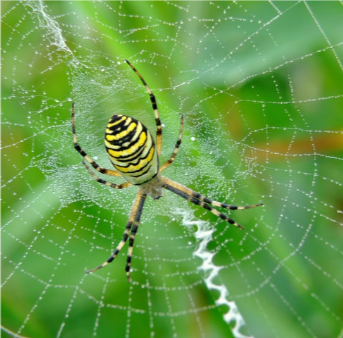

Orb-Weaver: Orb-weaver spiders belong to the family Araneidae and include various genera such as Araneus and Gasteracantha. They prefer habitats with ample vegetation, often constructing their distinctive wheel-shaped webs in openings between trees and shrubs where insects are likely to fly. The name “orb-weaver” comes from their characteristic orb-shaped webs. Signs of their presence include the appearance of these large, circular webs, typically found in gardens, forests, and other vegetated areas.


Sac Spider: Sac spiders belong to the genus Cheiracanthium. They prefer warmer and drier habitats and can often be found in places like leaf litter, under stones and boards, at the bases of plants, and on buildings under windowsills and siding. The name “sac spider” comes from their habit of creating small, silk sac-like retreats where they hide during the day. Signs of their presence include spotting these sacs in corners or crevices, as well as noticing small, yellow to pale green spiders roaming about.
For a complete list of all the common household pests that Four Seasons Exterminating exterminates in a Reoccurring Pest Control Treatment Plan, please click here!

